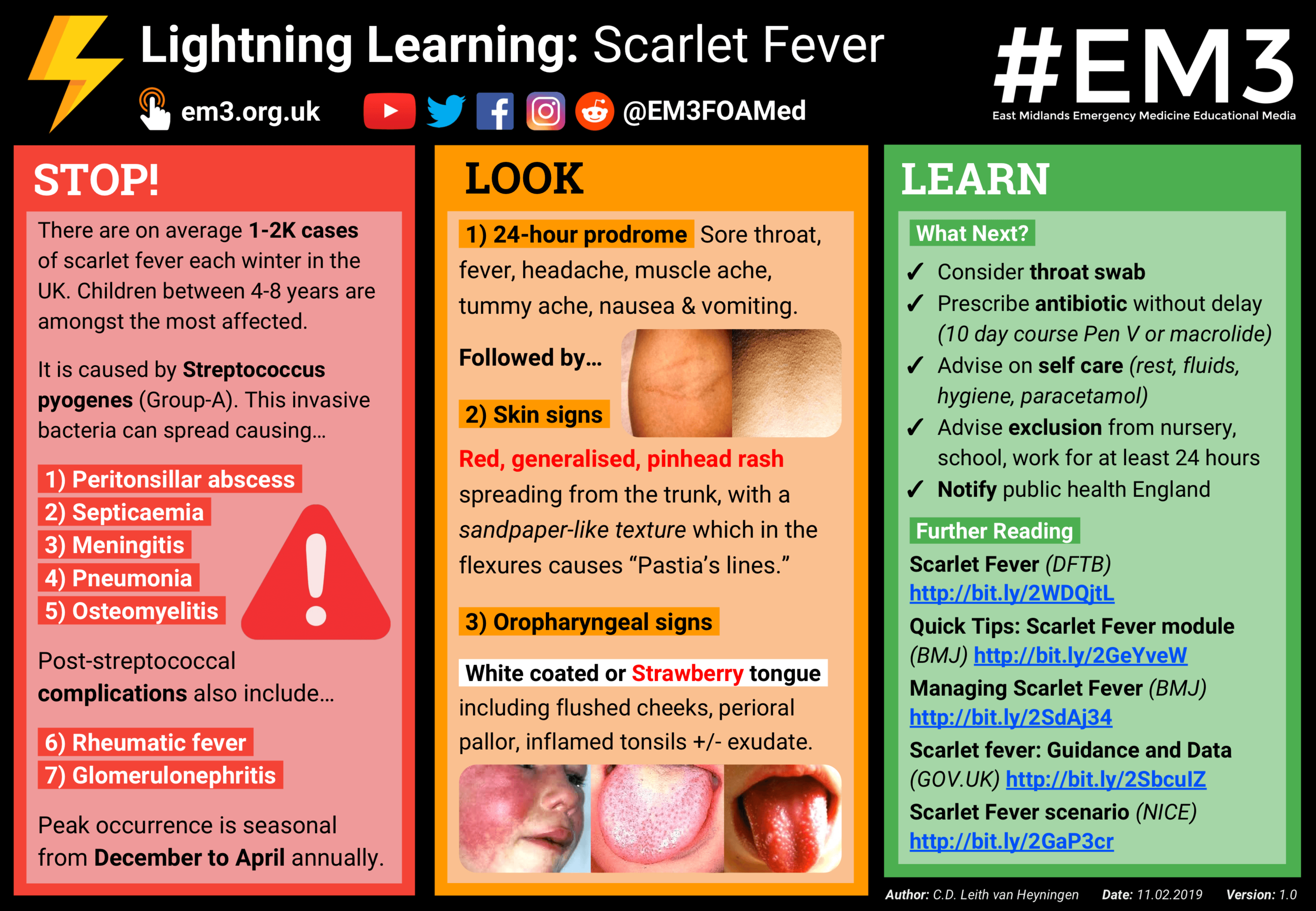Lightning Learning: Scarlet Fever
““As per the UKHSA guidance issued 2 December 2022, given the unusually high level of GAS and viral co-circulation in the community, health care professionals are asked to have a low threshold to consider and empirically prescribe antibiotics to children presenting with features of GAS infection.””
STOP!
There are on average 1-2K cases of scarlet fever each winter in the UK. Children between 4-8 years are amongst the most affected. It is caused by Streptococcus pyogenes (Group-A). This invasive bacteria can spread causing…
1) Peritonsillar abscess
2) Septicaemia
3) Meningitis
4) Pneumonia
5) Osteomyelitis
Post-streptococcal complications also include…
6) Rheumatic fever
7) Glomerulonephritis
Peak occurrence is seasonal from December to April annually.
LOOK
1) 24-hour prodrome: Sore throat, fever, headache, muscle ache, tummy ache, nausea & vomiting.
Followed by…
2) Skin signs: Red, generalised, pinhead rash spreading from the trunk, with a sandpaper-like texture which in the flexures causes “Pastia’s lines.”
3) Oropharyngeal signs: White coated or Strawberry tongue. including flushed cheeks, perioral pallor, inflamed tonsils +/- exudate.
LEARN
What Next?
- Consider throat swab
- Prescribe antibiotic without delay (10 day course Pen V or macrolide)
- Advise on self care (rest, fluids, hygiene, paracetamol)
- Advise exclusion from nursery, school, work for at least 24 hours
- Notify public health England
Further Reading…
DFTB: Scarlet Fever
BMJ: Quick Tips – Scarlet Fever module & Managing Scarlet Fever
GOV.UK: Scarlet fever – Guidance and Data
NICE: Scarlet Fever scenario








